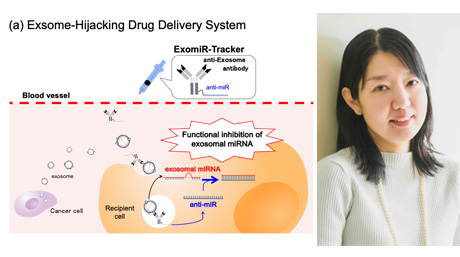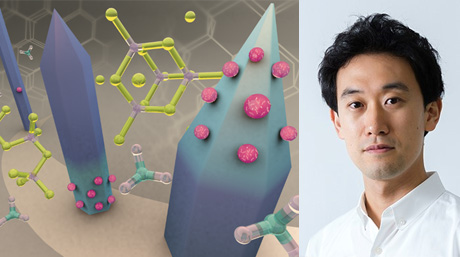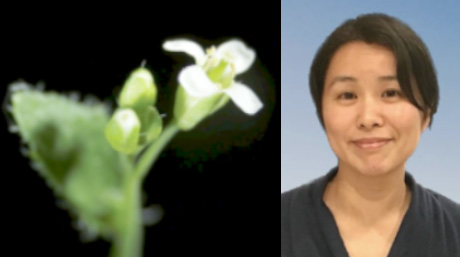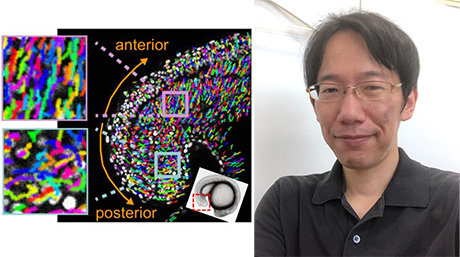Life Science and Technology News
【Labs spotlight】 Ueno Laboratory
Molecular machinery constructed from proteins
The Department has a variety of laboratories for Life Science and Technology, in which cutting-edge innovative research is being undertaken not only in basic science and engineering but also in the areas of medicine, pharmacy, agriculture, and multidisciplinary sciences.
This "Spotlight" series features a laboratory from the Department and introduces you to the laboratory's research projects and outcomes. This time we focus on Ueno Laboratory.
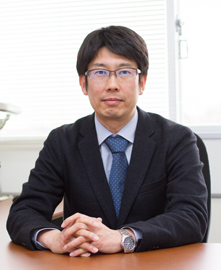
Areas of Supervision
Primary/Life Science and Technology
Secondary/Science and Technology for health Care and Medicine
Professor/Materials and Information Sciences Doctoral Program Takafumi Ueno![]()
| Degree | PhD 1998, Osaka University |
|---|---|
| Areas of Research | Bioinorganic Chemistry, Supramolecular Chemistry, Biomaterial Science, Chemical Biology. |
| Keywords | Metalloprotein, Protein assembly, Crystal engineering, Ferritin, Bacteriophage T4. |
| Website | Ueno Laboratory |
Research interest
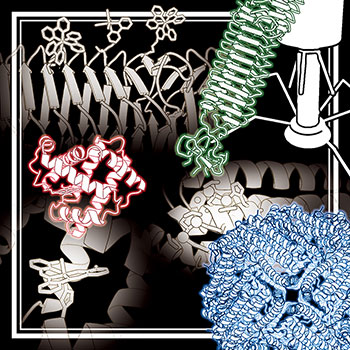
Why metals?
Bioinorganic chemistry is of growing importance in the fields of nanomaterial science and biotechnology. Coordination of metals by biological systems is a crucial step in intricate enzymatic reactions such as photosynthesis, nitrogen fixation and biomineralization. Although such systems employ proteins as molecular scaffolds, the important roles of proteins in coordination chemistry have not been systematically investigated and characterized. Many researchers are joining the field of bioinorganic chemistry to investigate the inorganic chemistry of proteins. This area is emerging as an important next-generation research field in bioinorganic chemistry. My research group has recently reported rational design methods of proteins in coordination chemistry for integration of catalytic reactions using metal complexes, preparation of mineral biomimetics, and mechanistic investigations of biomineralization processes with proteins.
The design of protein assembly has attracted much attention in the filed of bionanotechnology and biomaterial sciences because the protein assemblies with highly ordered nanostructures can be utilized as reaction vessels and molecular templates to create new functions. Various protein assemblies can provide chemical environment to be utilized for incorporation and/or display of inorganic materials and metal complexes as well as functional organic molecules with catalytic, magnetic and optical properties. Typical protein assemblies are suitable for the application. Protein cages, such as virus and ferritin, are utilized as molecular templates for preparation of metallic nanoparticles and immobilization of metal complexes within the cage to be applied to catalysis and drug delivery systems. Various functional molecules such as organic chromphores, metal complexes, and proteins, are precisely aligned on the surface of the protein tubes for applications in construction of light-harvesting system, catalysis, and in vivo imaging. Therefore, the fields of advanced materials by protein assemblies including designing artificial protein assemblies are in rapid expansion.
Research findings
Selected publications
- [1] B. Maity, S. Abe, and T. Ueno. Observation of gold sub-nanocluster, nucleation within a crystalline protein cage. Nat. Commun., 8,14820, (2017). DOI:10.1038/ncomms14820
- [2] S. Abe, H. Tabe, H. Ijiri, K. Yamashita, K. Hirata, K. Atsumi, T. Shimoi, M. Akai, H. Mori, S. Kitagawa and T. Ueno. Crystal Engineering of Self-Assembled Porous Protein Materials in Living Cells. ACS Nano, in press.
- [3] K. Fujita, Y. Tanaka, S. Abe and T. Ueno. A Photoactive CO Releasing Protein Cage for Dose-Regulated Delivery in Living Cells. Angew. Chem. Int. Ed., 55, 1056-1060 (2016). (selected as a Hot Paper). It was featured on Kagaku Kogyo Nippo (Sep. 11, 2015), PHYS.ORG, and Wn.com.
- [4] H. Tabe, T. Shimoi, M. Boudes, S. Abe, F. Coulibaly, S. Kitagawa, H. Mori, T. Ueno. Photoactivatable CO Release from Engineered Protein Crystals to Modulate NF-κB Activation. Chem. Commun., 52, 4545-4548 (2016).
- [5] B. Maity, K. Fukumori, S. Abe and T. Ueno. Immobilization of two organometallic complexes into a single cage to construct protein-based microcompartment. Chem. Commun., 52, 5463-5466 (2016).
- [6] S. Abe, B. Maity, and T. Ueno. Design of a Confined Environment using a Protein Cage and Crystals in Development of Biohybrid Materials. Chem. Commun., 52, 6496-6512 (2016). (Selected as an Inside Front Cover)
- [7] B. Maity, and T. Ueno. Design of Bioinorganic Materials At the Interface fo Coordinaton and Biosuprmolecular Chemistry. Chem. Rec., in press. (Personal Account selected as a front cover)
- [8] S. Abe, H. Ijiri, H. Negishi, H. Yamanaka, K. Sasaki, K. Hirata, H. Mori, and T. Ueno. Design of Enzyme-Encapsulated Protein Containers by in Vivo Crystal Engineering. Adv. Mater., 27, 7951-7956 (2015). It was featured on Kagaku Kogyo Nippo (Oct. 26, 2015), Nikkan Kogyo shinbun (Oct. 27, 2015), and Kyoto Shinbun (Nov. 03, 2015)
- [9] H. Nakajima, M. Kondo, T. Nakane, S. Abe, T. Nakao, Y. Watanabe and T. Ueno. Construction of an enterobactin analogue with symmetrically arranged monomer subunits of ferritin. Chem. Commun., 51, 16609-16612(2015). (Selected as an Inside Front Cover)
- [10] K. Fujita, Y. Tanaka, T. Sho, S. Ozeki, S. Abe, T. Hikage, T. Kuchimaru, S. Kizaka-Kondoh, and T. Ueno. Intracellular CO Release from Composite of Ferritin and Ruthenium Carbonyl Complexes. J. Am. Chem. Soc., 136, 16902-16908 (2014). It was featured on The Nikkei-sangyo (Nov. 21, 2014), Zaikei shinbun (Nov. 24, 2014), Nikkan Kogyo shinbun (Nov. 25, 2014), PHYS.ORG, nanotechweb.org, and nanowerk.
- Research Laboratories and Subjects
- Nanocages for gold particles: what is happening inside? | Life Science and Technology News
- In cell molecular sieve from protein crystal | Life Science and Technology News
- Ferritin releases carbon monoxide in regulated therapeutic doses | Tokyo Tech News
- Protein-engineered cages aid studies of cell functions | Tokyo Tech News
Contact
Professor Takafumi Ueno
Room 1034, B2 building, Suzukakedai campus
E-mail : tueno@bio.titech.ac.jp
*Find more about the lab and the latest activities at the lab site![]() .
.
*May 1, 2025:Some of the content has been updated with the latest information.
*October 1, 2025:Some of the content has been updated with the latest information.

